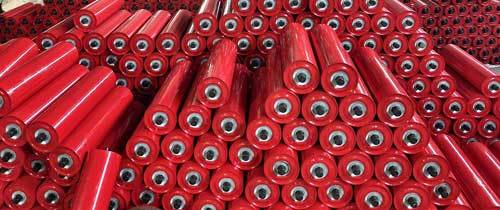-
-
-
-
Company Profile
Culture

Add:Liu Tuo Ying industrial zone, Boye County, Hebei province
Tel:+86 15033266555
Quote Now
Solutions for Your Industry, Ready for Your Choice
The Evolution of Industrial Conveyor Systems
Release time:
2025-02-21
In the late 19th century, the first conveyor systems were introduced as a way to streamline production processes in factories.

The Early Days of Conveyor Systems
In the late 19th century, the first conveyor systems were introduced as a way to streamline production processes in factories. These early systems consisted of simple roller conveyors that were manually operated by workers. While primitive by today's standards, these early conveyors were a significant improvement over manual transportation methods, allowing for faster and more efficient movement of materials.
The Rise of Automated Conveyor Systems
As technology advanced, so did conveyor systems. In the mid-20th century, automated conveyor systems began to emerge, incorporating motors and sensors to automate the movement of materials. These systems revolutionized the manufacturing industry, increasing efficiency and productivity in factories around the world. Automated conveyor systems allowed for continuous, uninterrupted production lines, leading to significant cost savings for manufacturers.
Innovations in Conveyor Technology
In recent years, advancements in technology have led to the development of highly sophisticated conveyor systems. Modern conveyors are equipped with state-of-the-art features such as RFID tracking, automated sorting, and dynamic routing capabilities. These innovations have further improved the efficiency and reliability of conveyor systems, making them essential components of modern manufacturing facilities.
The Future of Industrial Conveyor Systems
Looking ahead, the future of industrial conveyor systems is filled with exciting possibilities. As technology continues to evolve, we can expect to see even more advanced conveyor systems that are faster, smarter, and more adaptable to changing production demands. From AI-powered systems to self-driving conveyors, the future holds endless opportunities for innovation in the world of industrial automation.
Conclusion
The evolution of industrial conveyor systems has been a remarkable journey, transforming the way materials are transported within factories and warehouses. From humble beginnings to cutting-edge technology, these systems have revolutionized the manufacturing industry and continue to play a vital role in modern production processes. As we look to the future, the possibilities for innovation in conveyor technology are limitless, promising exciting advancements that will further enhance efficiency and productivity in manufacturing facilities around the world.Keyword:
Previous
Next article
Related News
The Evolution of Industrial Conveyor Systems
In the late 19th century, the first conveyor systems were introduced as a way to streamline production processes in factories.
2025-02-21
Advantages of baffle conveyor belts
The baffle conveyor belt can transport various types of materials, including powder, granular, block, etc. And in the inclined conveying and horizontal conveying are excellent, the scope of application is very wide.
2025-02-21
Characteristics and differences between PVC conveyor belt and PU conveyor belt
PVC conveyor belts and PU conveyor belts are common industrial conveyor belts, and they all have their own characteristics and scope of application. This article will explore the differences and characteristics of these two types of conveyor belts.
2025-02-21
What are the characteristics of rubber conveyor belt
Soft texture: rubber material conveyor belt has good flexibility, can adapt to a variety of complex environment.
2025-02-21
Application field of conveying equipment
Logistics express industry: use belt conveyor line, roller conveyor line, chain plate conveyor line, mesh belt conveyor line, continuous hoist, spiral hoist and other conveying equipment to improve conveying efficiency and reduce the damage of conveyed goods.
2025-02-21

Telephone/WhatsApp:
E-mail:
INQUIRY
Business License
-










